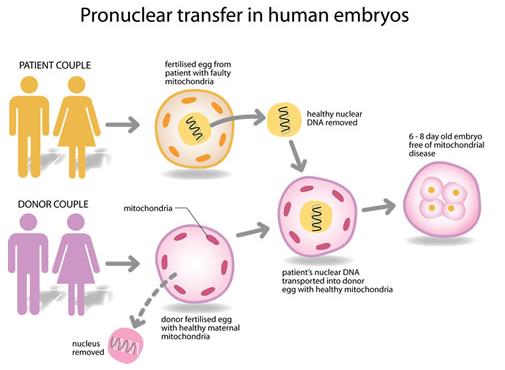Ash means empty skies over Britain
Thousands of travellers are feeling the effects of a large volcanic eruption in Iceland, with flights across Europe cancelled as ash floats across Britain and the continent.
The impact on travel plans is illustrated well in this graphic that ran in The Guardian.
Scientists meanwhile have been analysing every aspect of the eruption and its aftermath looking at the potential impacts of volcanic ash on aircraft jet engines, and the effects on the respiratory health of people, on crops and the climate.
Our colleagues at the Science Media Centre in London pulled out all the stops to get scientific analysis of this natural event and its flow-on consequences. You can read those comments here.
DNA swap to stop genetic diseases
Scientists hope the passing of some genetic diseases from parents to children may be eliminated using a method where DNA from a woman’s embryo is transferred into the donor embryo of another woman.
The technique, outlined in Nature this week, has been successfully completed in humans for the first time, with the transfer leaving behind mitochondrial DNA whose mutations can cause genetic diseases such as Leigh Syndrome and retinitis pigmentosa.
The AusSMC wrapped up reaction from scientists here. Also available from the AusSMC in multiple formats is a graphic illustrating the process: a medical first that some critics argue could lead to the creation of “designer babies”.
ERMA greenlights GM research
Agresearch won a regulatory victory this week as the Environmental Risk Management Authority approved its application to continue and expand genetic modification research at its Ruakura facility.
The approval attracted criticism from anti-GM groups. However, as
the President of the New Zealand Institute of Agricultural and Horticultural commented in an alert put out by the SMC, “…it needs to be stressed that this is fundamentally experimental science being undertaken for the public good in a Crown agency. I am not aware of any “corporate” influence beyond that defined as acceptable and allowed under the CRI Act. I do not expect to wake up and put GM milk on my Weet-Bix in the near future!”
The full ERMA decision is available here.
Lots of wave action next week
Next week will see the marine energy industry gather at Te Papa in Wellington for a conference looking at technologies to extract energy using wave and tidal turbines.
Among the keynote speakers at next week’s conference is NIWA oceanographer Dr Craig Stevens who said in a release this week: “High speed flows in the coastal ocean are very complicated and not surprisingly carry vast amounts of energy. We are starting with the basics, looking at the oceanography and getting a handle on variability. This will provide us with real knowledge when it comes to both picking the best sites for energy extraction and understanding how the environment will be impacted.”
AWATEA, which is hosting the conference, yesterday released a report examining the state of marine energy allocation in New Zealand.
What drove science media in March?
The Science Media Centre’s Media Tracker for March shows mentions of the Crown Research Institutes increased as the media dissected the CRI Taskforce report, while late March saw a spike in biotech-related stories as the NZBio conference brought together people from the industry.
Check out the data for the month here.
